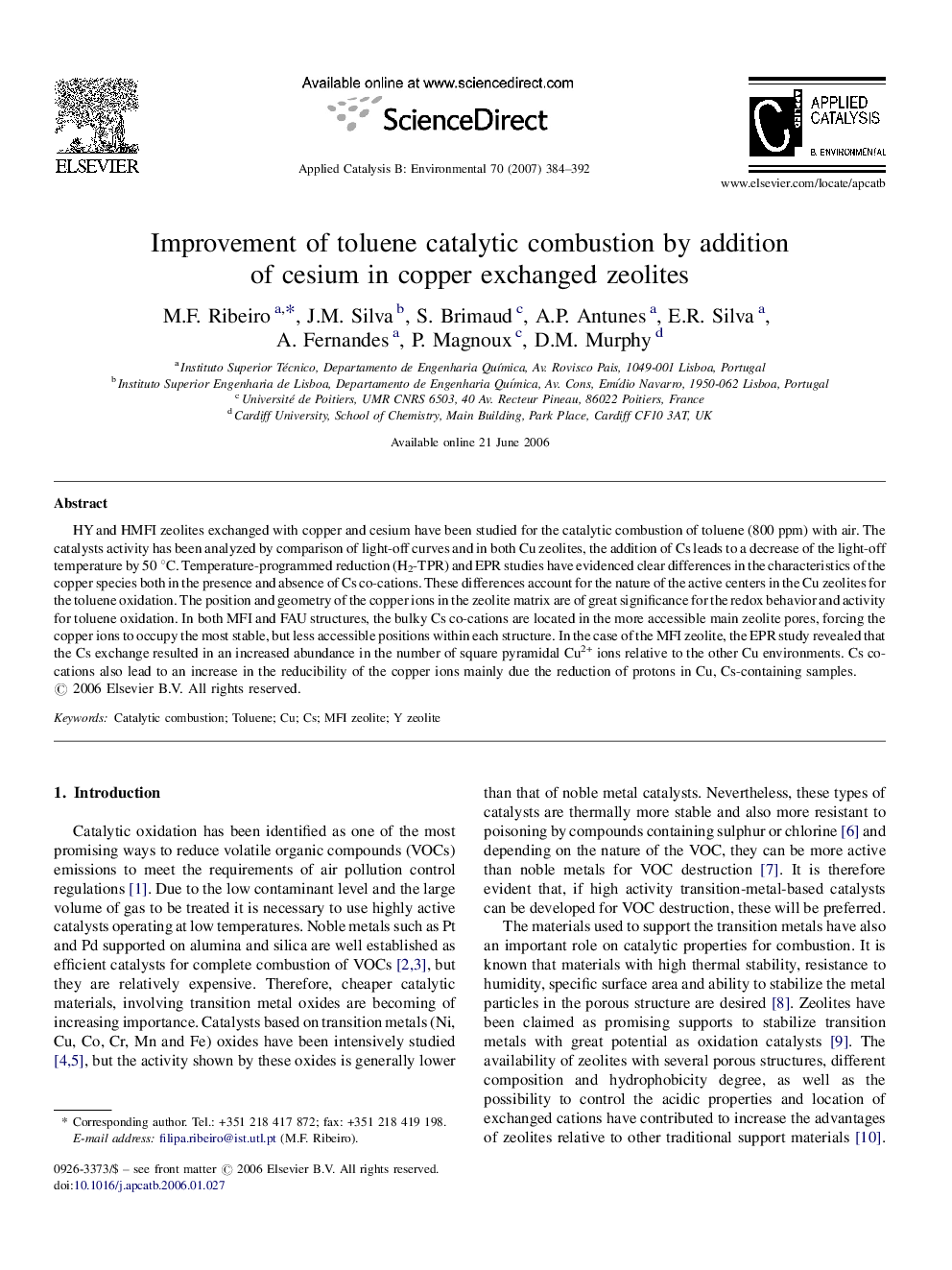| Article ID | Journal | Published Year | Pages | File Type |
|---|---|---|---|---|
| 48821 | Applied Catalysis B: Environmental | 2007 | 9 Pages |
HY and HMFI zeolites exchanged with copper and cesium have been studied for the catalytic combustion of toluene (800 ppm) with air. The catalysts activity has been analyzed by comparison of light-off curves and in both Cu zeolites, the addition of Cs leads to a decrease of the light-off temperature by 50 °C. Temperature-programmed reduction (H2-TPR) and EPR studies have evidenced clear differences in the characteristics of the copper species both in the presence and absence of Cs co-cations. These differences account for the nature of the active centers in the Cu zeolites for the toluene oxidation. The position and geometry of the copper ions in the zeolite matrix are of great significance for the redox behavior and activity for toluene oxidation. In both MFI and FAU structures, the bulky Cs co-cations are located in the more accessible main zeolite pores, forcing the copper ions to occupy the most stable, but less accessible positions within each structure. In the case of the MFI zeolite, the EPR study revealed that the Cs exchange resulted in an increased abundance in the number of square pyramidal Cu2+ ions relative to the other Cu environments. Cs co-cations also lead to an increase in the reducibility of the copper ions mainly due the reduction of protons in Cu, Cs-containing samples.
